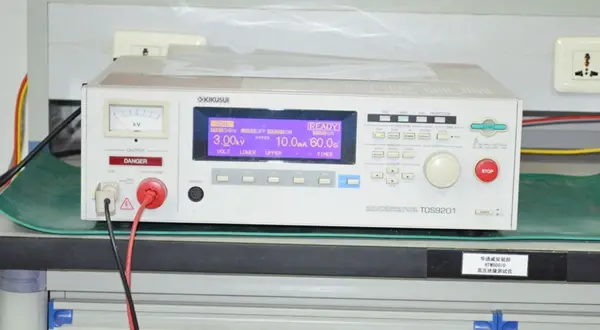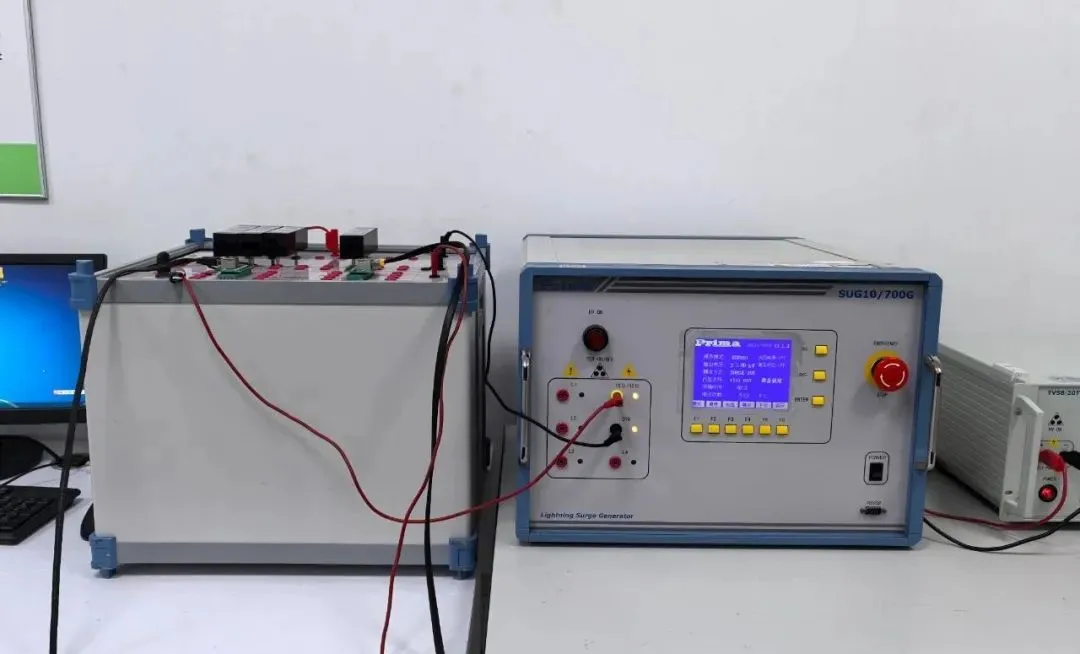
16 CFR 1263 + UL 4200A + GCC Certificate
In recent years, there have been frequent safety incidents involving children accidentally swallowing button batteries. In response, the U.S. Consumer Product Safety Commission (CPSC) officially adopted the UL 4200a-2023 standard in September 2023 and incorporated it into the 16 cfr 1263 regULation, which will be mandatory starting March 19, 2024. To eliminate or significantly REDuce the risk of injury to children aged six and under caused by ingestion of button or coin batteries, U.S. regulators voted to establish a new safety standard. The new regulation, ul 4200a-2023, requires that consumer products and household items containing button batteries must undergo testing and obtain gcc certification before they can be legally sold.

Common Misconception:
Some sellers and laboratories mistakenly believe that simply completing the ul 4200a test and obtaining a gcc certificate is sufficient to pass the audit.
Actual Requirement:
UL 4200A testing must cover battery safety performance (such as short-circuiting, overcharging, crushing, etc.), but lack of label evaluation will result in automatic failure.
Mandatory Enforcement of 16 CFR 1263 Standard
New Key Requirements:
This standard clearly defines requirements for warning labels on button battery products, including content, size, and placement. For example, labels must include warnings such as “Choking Hazard” and “Keep Away from Children,” with font sizes meeting specified minimum standards.
Compliance Key Points:
Label evaluation must be included as a separate module in the testing process and combined with UL 4200A test results in a single report.
GCC Certificate (General Conformity Certificate)
Issuance Requirements:
Based on the UL 4200A test report
Signed by the manufacturer or importer
Must include product information, applicable regulations (e.g., 16 CFR 1263), and testing laboratory qualifications
Key Points:
Each shipment must be accompanied by a GCC certificate; otherwise, CPSC may reject entry.
No fixed validity period, but design or material changes to the product require re-certification.
ANSI/UL 4200A Standard Overview
This standard primarily aims to prevent injuries caused by ingestion of button or coin batteries, with the following requirements:
1. Structural Inspection
For removable/rechargeable batteries:
1. Remove removable parts (that users can open or remove without tools or with minimal effort and two independent simultaneous hand actions), then test with probe 11 to ensure it cannot touch the button/coin battery.
2. Products with removable/rechargeable button/coin batteries must be designed to prevent children from removing the battery by either method (a) or (b):
a) Battery compartment must require a tool (e.g., screwdriver, coin) to open. If secured by screws or threaded access covers, at least 0.5 Nm torque and 90° rotation is required, or the fastener must engage at least two full threads. Fasteners should be fixed to the door, cover, or device.
b) Battery compartment doors/covers must require at least two independent simultaneous manual actions to open, not achievable by a single finger or single movement.
For non-removable/non-replaceable batteries:
a) Use of enclosure or similar device compliant with tests 6.2 and 6.3 to prevent access;
b) Fixed by welding, fasteners (e.g., rivets), or equivalent methods that pass safety test 6.4.
For batteries not intended to be moved or replaced by users, the battery must withstand an outward force of 20±2 N applied continuously for 10 seconds without detachment.
2. Performance testing
2.1 Preconditioning Tests:
Stress relief test: 70°C or higher (based on actual temperature rise), 7 hours
Battery replacement test: Open/close battery compartment and replace battery 10 times



2.2 Abuse Tests:
Drop test: Depending on product type, portable products must be dropped from 1 meter height 3 times; handheld products must be dropped from 1 meter height 10 times, checking enclosure and battery compartment impact resistance.
Impact test: Three impacts using a 500g steel ball of 50.8mm diameter with 2 joules energy to simulate accidental collisions.
Crush/Torque/Pull/Compression tests:
1. Crush: 330±5 N for 10 seconds
2. Torque: 0.50 Nm for 10 seconds
3. Pull: 72.0 N for 10 seconds
4. Compression: 136 N for 10 seconds
These verify product integrity under abnormal forces.
Stress relief test repeated: 70°C or higher for 7 hours.
Battery replacement durability: For replaceable battery products, perform 10 cycles of battery compartment open, close, and battery replacement.
Replaceable Battery Products:
Battery compartments must have dual protection: opening requires tools (screwdriver, coin) or two independent manual actions to prevent easy child access.
Non-replaceable Battery Products:
Fully enclosed design to prevent direct battery exposure; fixed by welding, riveting, or equivalent structural methods to eliminate battery detachment risk.
2.3 Battery Compartment Safety Test:
A force of 20±2 N applied outward for 10 seconds must not detach the battery.
3. Labeling Requirements
3.1 Packaging Markings:
When the main display panel of the consumer product packaging does not have enough space to use the warning labels shown in Figures 7B.1 or 7B.2, the main display panel must prominently include the warning from Figure 7B.3. The icon must be at least 7 mm wide and 9 mm high. The remaining warning statements must appear on an auxiliary display panel as shown in Figure 7B.4. Text and colors must follow Figures 7B.3 and 7B.4.
(If packaging space is limited, use Figure 7B.3 on the main panel and Figure 7B.4 on the auxiliary panel.)
3.2 Product Markings:
Consumer products must mark warning labels on product displays as shown in Figure 7C.1, with colors matching Figure 7C.1.
If product space is limited, use the “Warning: Contains Coin Battery” icon from Figure 7C.2 without text. The icon must be at least 7 mm wide and 9 mm high.
Instruction Manual Warning Statements
Manuals (if included) must have markings and the following statements:
a) "Remove and immediately recycle or dispose of used batteries according to local regulations, keep away from children. Do not discard batteries in household waste or by incineration."
b) "Used batteries can cause serious injury or death."
c) "Call your local poison control center for treatment information."
d) Statement indicating compatible battery types (e.g., LR44, CR2032).
e) Statement indicating nominal battery voltage.
f) "Do not recharge non-rechargeable batteries."
g) "Do not force discharge, recharge, disassemble, heat above manufacturer’s rated temperature, or incinerate. Doing so may cause injury from venting, leakage, or explosion, leading to chemical burns."
For products with replaceable button/coin batteries, include:
a) "Ensure batteries are installed correctly according to polarity (+ and –)."
b) "Do not mix old and new batteries, different brands or types, such as alkaline, carbon-zinc, or rechargeable batteries."
c) "Remove and immediately recycle or dispose of batteries from devices not used for extended periods according to local regulations."
d) "Always secure the battery compartment fully. If the compartment does not close securely, stop using the product, remove batteries, and keep them away from children."
For products with non-replaceable button/coin batteries, include a statement indicating the product contains non-replaceable batteries.
Email:hello@jjrlab.com
Write your message here and send it to us
 Does RoHS Apply to Packaging?
Does RoHS Apply to Packaging?
 How to Get RoHS Compliance?
How to Get RoHS Compliance?
 How to get EN 62368-1 Test Report
How to get EN 62368-1 Test Report
 EN 300 328 Bluetooth Test Report
EN 300 328 Bluetooth Test Report
 How to get the EN 300328 Test Report?
How to get the EN 300328 Test Report?
 In-depth Interpretation of SAA Certification Q&
In-depth Interpretation of SAA Certification Q&
 Differences Between EN71 and CPC for Children's To
Differences Between EN71 and CPC for Children's To
 IP56/IP67/IP68 Waterproof and Dustproof Rating Tes
IP56/IP67/IP68 Waterproof and Dustproof Rating Tes
Leave us a message
24-hour online customer service at any time to respond, so that you worry!




